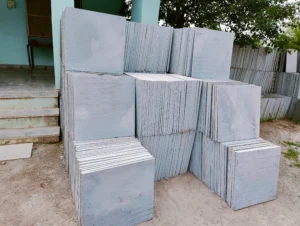Kota Stone: The Unique Texture and Its Aesthetic Appeal
Kota stone, a fine-grained variety of limestone, has long been treasured for its unique texture and aesthetic appeal, earning it a prominent place in the field of construction and architecture. This hard, non-porous, and durable stone, predominantly quarried in the Kota district of Rajasthan, India, boasts a broad range of textures that has contributed to its global popularity.
Understanding the Texture of Kota Stone
The texture of Kota stone is a definitive aspect that sets it apart from other natural stones. A single piece of Kota stone can exhibit a texture spectrum from very fine to rough. This diversity in texture is primarily due to the varying levels of calcite found within the stone, which can influence its surface texture. Moreover, the method of finishing or polishing the stone also significantly contributes to its final texture.
Kota stone has which texture
Primarily, Kota stone has a smooth and glossy texture when polished. This polished Kota stone displays a rich and vibrant natural color palette, including shades of green, blue, brown, grey, and beige. The polished surface also enhances its natural veining, giving it a distinctive, marbled effect.
On the other hand, Kota stone can also present a rough or rugged texture, particularly when it is not polished or given a raw, natural finish. This texture is commonly sought after for outdoor applications such as landscaping and garden paths, where its rough texture provides natural slip resistance.
Aesthetic Appeal and Practical Applications
Kota stone’s unique texture spectrum allows it to seamlessly blend with a variety of architectural styles and aesthetics, making it a versatile material for a wide range of applications. Its glossy texture can impart an elegant, refined look to interior spaces, often seen in commercial buildings, hotels, and luxury residential properties. It is also commonly used in bathrooms and kitchens because of its non-porous nature and the fact it doesn’t allow water to seep in.
Alternatively, the stone’s rough texture is ideal for areas requiring more grip, such as exterior walkways and driveways. The rustic and natural appearance of unpolished Kota stone can add a unique charm to outdoor spaces, serving as a perfect complement to the greenery of gardens or the modernity of urban architecture.
The texture of Kota stone is not only visually appealing but also offers functional benefits. The smooth surface is easy to clean, resistant to abrasion, and maintains its color for a long time, whereas the rough texture provides enhanced slip resistance, making it a safe choice for areas prone to dampness.
Durability and Maintenance
Kota stone’s durability and low maintenance requirements further enhance its appeal. Its high resistance to weathering, erosion, and wear-and-tear makes it a reliable choice for both indoor and outdoor applications. It can maintain its texture and appearance for many years, requiring minimal maintenance.
Cleaning and maintaining the texture of Kota stone is relatively simple. Polished Kota stone can be cleaned with a mild detergent and a soft cloth to maintain its glossy sheen, while unpolished, rough-textured stone can be swept and washed to remove any dirt or debris.
To sum it up, Kota stone’s unique texture, versatile aesthetic, and durable properties have made it a popular choice in both traditional and modern construction. Whether you prefer the refined elegance of polished Kota stone or the rustic charm of its unpolished variant, this natural stone offers a wealth of possibilities to enhance your architectural and interior design projects.

